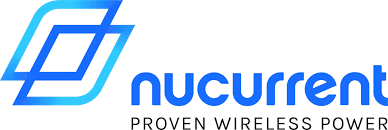By now, it’s become widely accepted that we’re invariably, and irrevocably, changed. And while some folks like to bemoan their dry hands or cabin fever – we think that it goes deeper than that. Humans are some of the most adaptable, resilient creatures on the planet and nothing shows it better than how we decide to create our new normal.
Prior to the restrictions, when you walked through the doors at NuCurrent (a wireless power company) it was buzzing with activity: a team of engineers would be in the large conference room meeting with clients; sales was sauntering over to marketing to collaborate on a new pitch; CEO Jacob Babcock would throw you a casual “hey, goodmorning”; while smells of coffee & solder wafted from the lab.
It was exciting to come to work each day. But within weeks after CES in early January – and cancellations at Mobile World Congress in Barcelona – we knew the rumblings of what made its way to Seattle in March would soon come for Chicago.
And then we were met with the question: How will NuCurrent continue to provide inductive charging solutions when our team of multidisciplinary engineers will no longer be steps away from each other? In the world of product development, a few weeks “off” can quickly spiral into months-long delays, so it was obvious that closing our doors couldn’t be an option.
Here’s how we successfully managed to split our headquartered office into 35.
It’s wise to decentralize
Wireless power solutions are created by combining the expertise of antenna, electronics, mechanical, radio frequency and software engineering disciplines. Meaning that a team of five people will touch a prototype before it’s out the door and to the client. This happens every time, for every project. Our heads of engineering and operations had to accurately forecast the next two months of engineering activity based on the project pipeline to determine which teams needed what and when. Each engineer’s survival kit included their testing equipment, hardware prototypes and shipping materials for client deliverables.
Budget for what you can (and can’t) afford
Even though each engineer went home with a personalized survival kit based on their roles & projects – some equipment can’t be bought 20 times over. Network, Impedance and Spectrum Analyzers, for example, cost roughly $100K, $20K & $2K and are critical to the work that we do. To remedy this, we created a system to allow individual members of our team to reserve the lab should they need to conduct some testing independently. And, of course, protective equipment was provided and sanitizing wipes were right there to ensure the next person would be safe to run their tests.
Have a contingency plan for your contingency plan
Our new normal rests in the unknown – and we have no choice but to embrace that. For many of us, those are questions like: What if we’re working from home for another year? What if restrictions lift by the end of summer? Which employees would we phase in first, and why? Should we postpone our move to a larger office space? Our leaders are increasing the frequency of their planning cycles to address the day-to-day performance metrics alongside the macro forces (i.e. government health recommendations & economic health) that are now entwined with our business.
We couldn’t have predicted any of this. Not COVID, and surely not the success of how well our once, in-office wireless power team would adapt to being spread across 35 separate locations around the world. But our people are empowered & are owning the task of shifting our organizational mentality from surviving back to thriving.
Join as an 1871 Early Stage Member.
Attend info sessionSubscribe to our ICYMI newsletter.
Share this post:

